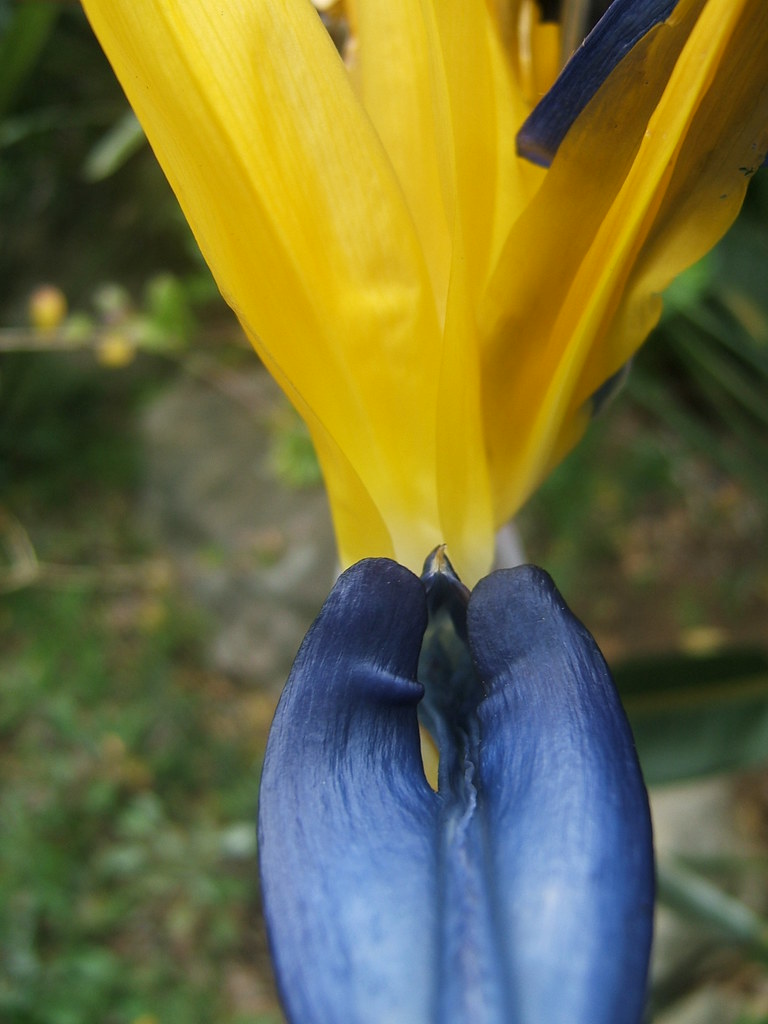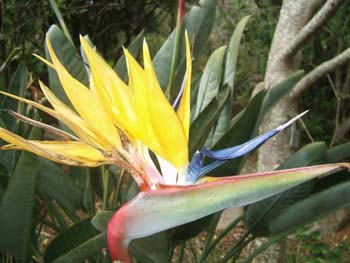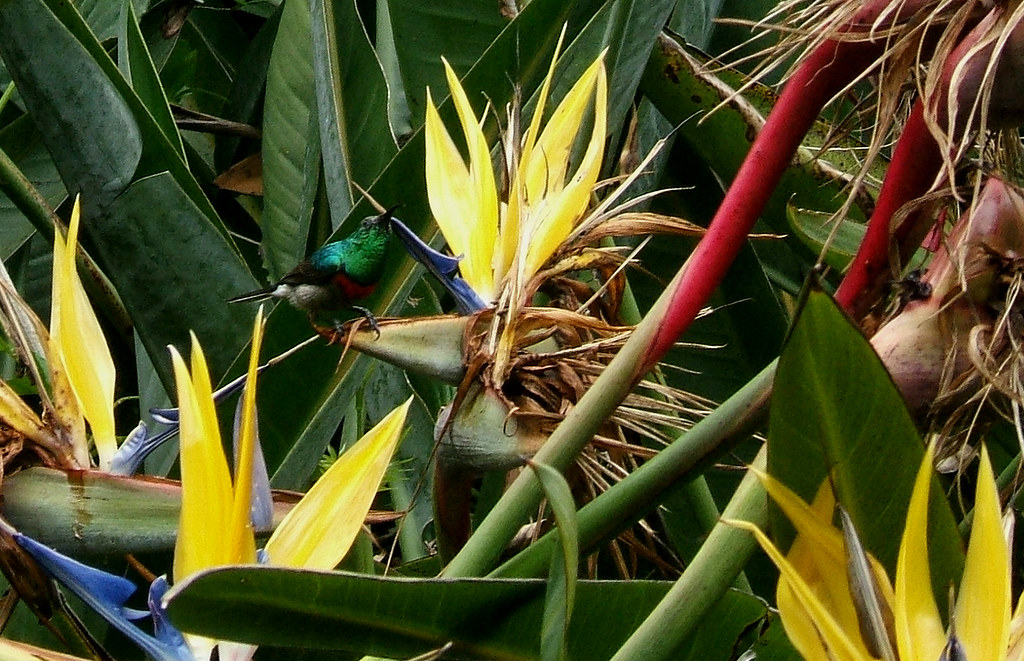 Heres the more conventional side profile. All these shots are of the cultivar "Mandela's Gold" which is a bit yellower than the more orange form usually seen.
Heres the more conventional side profile. All these shots are of the cultivar "Mandela's Gold" which is a bit yellower than the more orange form usually seen.  So why do they have this weird form? What could pollinate the flower and whats that big green fleshy bit at the bottom for? At Kirstenbosch botanic gardens a couple of quiet minutes observation will give you the answer.
So why do they have this weird form? What could pollinate the flower and whats that big green fleshy bit at the bottom for? At Kirstenbosch botanic gardens a couple of quiet minutes observation will give you the answer.
The weird green fleshy bit is a perch for the pollinator; a sunbird. This is the more dramatically coloured male bird. The females are a drab brown. I'm afraid I haven't tracked down the exact species. This is what I love about spending time learning about the natural world, if you look carefully enough everything, be it beautiful or ugly, has a purpose.
2 comments:
This is super, Tai! I took some photos of cultivated Bird of Paradise at our hotel in San Diego last summer. I think they propagate them there by dividing them. I didn't know about the sunbird.There's a good explanation of what you were talking about on the Kew Gardens web site:
http://www.rbgkew.org.uk/ksheets/bop.html
Thank you both. A couple of minteresting points on that link Pam. Sir Joseph Banks(who introduced this species to cultivation) all those years ago) lived very near the small English town where I was born. I have a couple of photos of the other species S. juncea that I will share at some point and my dad tells me he has an ordinarily coloured S. reginae in flower at his house so I'll try and show those as a comparison at some point.
Post a Comment